Introduction
Territory modern Italy until 476 was the center of the huge Roman Empire, which included almost all countries Western Europe, Middle East, North Africa... The Roman Empire developed a developed legal system.
In the Middle Ages, the territory of modern Italy was divided into many states, periodically attacked by more powerful neighbors: Austria, Spain, France. At the end of the 18th century, Italy was dismembered into 11 states, the most significant of which were: the Neapolitan and Piedmont Kingdoms, the Duchy of Milan and the Duchy of Tuscany (Florence), the Venetian Republic. A special role in Italy has always been played by the Papal States, under the jurisdiction of the Pope, the head of the Roman Catholic Church. In 1870, under the auspices of the Kingdom of Piedmont, the Italian states were united into a single kingdom, and Rome became the capital of Italy. The Piedmontese Statute of 1848, also known as the Albertine Constitution, after the Piedmontese King Charles Albert, was used as the constitution of the new state.
The Albertine constitution lasted quite a long time - until 1946. Its peculiarity was that it was "flexible", that is, it could be changed and supplemented by a simple majority of votes of members of parliament, which made it possible in 1922 to constitutionally formalize the fascist dictatorship headed by Benito Mussolini. Fascist Italy acted as an ally of Nazi Germany during the Second World War (1939-1945). At the end of the war, the fascist regime was overthrown. In a referendum on June 2, 1946, the people of Italy called for the elimination of the monarchical form of government. A modern constitution was adopted by the Constituent Assembly on December 22, 1947, which entered into force on January 1, 1948. The country officially became the Italian Republic. On the territory of Italy, there are still two independent enclave states - the Vatican and San Marino.
The leading political parties are: Left Democrats, Democratic Union, Italian People's Party, United Christian Democrats, Forward Italy party. Italy is a member of the European Union.
Form of government of Italy
By the form of government, Italy is parliamentary republic... Legislative power is exercised by the Parliament, consisting of chambers of deputies and Senate of the Republic... The executive power is exercised by the Government of the Republic - Council of Ministers... The head of state is President of the Republic elected by parliament at a joint meeting of its members. The head of state, as is customary in parliamentary forms of government, plays a nominal role in the state mechanism, his acts need to be countersigned by the chairman of the Council of Ministers or the relevant ministry. In fact, the functions of the head of state are performed by the head of government - the chairman of the Council of Ministers.
The system of checks and balances between the branches of government is also built on the type of parliamentary government. So, before assuming its functions, the government of the Republic, no later than 10 days after its formation, must obtain the confidence of both chambers. Laws passed by parliament are signed by the President of the Republic. Before the signing of the law, he can demand a new discussion in a motivated message to the chambers, that is, he has the right to veto. However, if the chambers re-approve the law, the President of the Republic is obliged to sign it. The President of the Republic can be prosecuted by Parliament for high treason or constitutional infringement. The President of the Republic may dissolve both chambers or one of them.
Statehood emerged quite early. Long before the onset of our era, these lands were the ancient kingdoms of the Etruscans and Latins. Forms of government in Italychanged from century to century. There was a republic and a monarchy here. Until 476 A.D. Italy became the center of the powerful Roman Empire, whose territories stretched from North Africa to the British Isles, from Atlantic Ocean to the Black Sea coast. It was at the time of this state formation that the so-called Roman law developed. It still serves as the foundation of modern jurisprudence.
Historical continuity
Since the inhabitants of the peninsula still felt like the successors of a great power. Not only the law of the ancient state becomes the basis of the written Kutyums (codes), but also the form of government. Italy as a state does not yet exist, but there is a great thirst for unification in the Second Rome. However, Aachen became the capital of the Western Empire, and Constantinople became the capital of the Eastern Empire. Italy itself was fragmented into many states. And the forms of social and political administration are very different among themselves - from urban communes and republics to feudal duchies and principalities. The Papal Region stands out, on the territory of which the Roman pontiff was not only a religious ruler, but also a secular lord.
Italy and the "Spring of Nations"
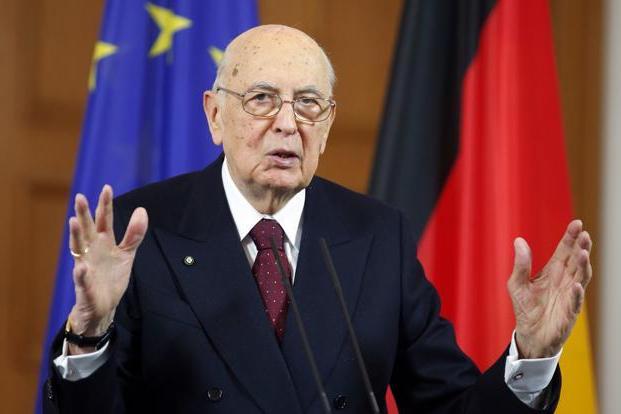
The country's political fragmentation has led to numerous encroachments on its territory by its warlike neighbors - Austria, France and Spain. She also became a target for attacks by Ottoman Turkey. By the middle of the 19th century, many territories of modern Italy were captured by the Austro-Hungarian Empire. The Spring of Nations (1840s) gave birth to the Piedmont Statute, adopted under the auspices of King Charles Albert of Turin. This code, later named after the creator of the Albertine Constitution, became the basis of the modern form of government in Italy.
1946 referendum
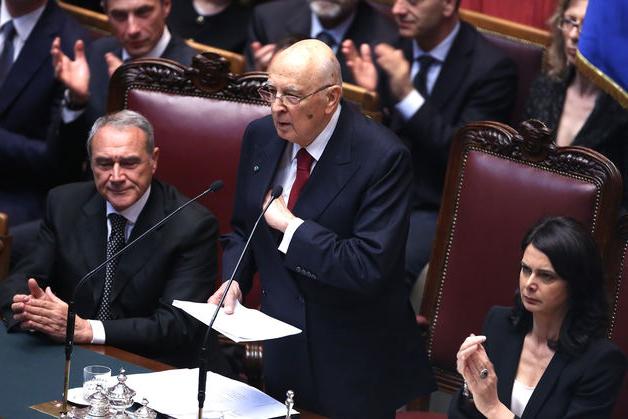 Since the Albertine constitution could be changed by members of parliament, reforms were introduced in 1922, and Italy became a fascist dictatorship. After the Second World War, in a referendum held on June 2, 1946, the inhabitants of the country abandoned the monarchical form of government of Italy. From the beginning of 1948, a new Constitution of the Republic came into force, which is still in force.
Since the Albertine constitution could be changed by members of parliament, reforms were introduced in 1922, and Italy became a fascist dictatorship. After the Second World War, in a referendum held on June 2, 1946, the inhabitants of the country abandoned the monarchical form of government of Italy. From the beginning of 1948, a new Constitution of the Republic came into force, which is still in force.
Modern italy
The form of government of this country - - the President - plays a purely nominal role. Everything in the Republic is carried out by the Parliament. This body consists of two levels: the Senate and the Chamber of Deputies. The Italian government - the Council of Ministers - exercises executive power. The prime minister is vested with the greatest powers. The President is elected by the Parliament. His acts are also limited to counter-signals from the Premier or the line ministry. Another in Italy is represented by the Constitutional Court, 15 members of which are appointed by the President, Parliament and the highest bodies of general and administrative jurisdiction. Italy has the specificity that the deputies of the chamber are elected by the entire population, divided into districts according to the census and dividing this amount by 630 (the number of seats in this level of Parliament). Senators represent 20 regions of Italy.
by discipline: "Foreign management experience"
on the topic: "Features of the semi-presidential form of government in Italy"
Introduction
Until 476, the territory of modern Italy was the center of the huge Roman Empire, which included almost all the countries of Western Europe, the Middle East, and North Africa. The Roman Empire developed a developed legal system.
In the Middle Ages, the territory of modern Italy was divided into many states, periodically attacked by more powerful neighbors: Austria, Spain, France. At the end of the 18th century, Italy was dismembered into 11 states, the most significant of which were: the Neapolitan and Piedmont Kingdoms, the Duchy of Milan and the Duchy of Tuscany (Florence), the Venetian Republic. A special role in Italy has always been played by the Papal States, under the jurisdiction of the Pope, the head of the Roman Catholic Church. In 1870, under the auspices of the Kingdom of Piedmont, the Italian states were united into a single kingdom, and Rome became the capital of Italy. The Piedmontese Statute of 1848, also known as the Albertine Constitution, after the Piedmontese King Charles Albert, was used as the constitution of the new state.
The Albertine constitution lasted quite a long time - until 1946. Its peculiarity was that it was "flexible", that is, it could be changed and supplemented by a simple majority of votes of members of parliament, which made it possible in 1922 to constitutionally formalize the fascist dictatorship headed by Benito Mussolini. Fascist Italy acted as an ally of Nazi Germany during the Second World War (1939-1945). At the end of the war, the fascist regime was overthrown. In a referendum on June 2, 1946, the people of Italy called for the elimination of the monarchical form of government. A modern constitution was adopted by the Constituent Assembly on December 22, 1947, which entered into force on January 1, 1948. The country officially became the Italian Republic. On the territory of Italy, there are still two independent enclave states - the Vatican and San Marino.
The leading political parties are: Left Democrats, Democratic Union, Italian People's Party, United Christian Democrats, Italy Forward Party. Italy is a member of the European Union.
Form of government of Italy
By the form of government, Italy is parliamentary republic... Legislative power is exercised by the Parliament, consisting of chambers of deputiesand Senate of the Republic... Executive power is exercised by the Government of the Republic. - Council of Ministers... The head of state is President of the Republicelected by parliament at a joint meeting of its members. The head of state, as is customary in parliamentary forms of government, plays a nominal role in the state mechanism, his acts need to be countersigned by the chairman of the Council of Ministers or the relevant ministry. In fact, the functions of the head of state are performed by the head of government - the chairman of the Council of Ministers. The system of checks and balances between the branches of government is also built on the type of parliamentary government. So, before assuming its functions, the government of the Republic, no later than 10 days after its formation, must obtain the confidence of both chambers. Laws passed by parliament are signed by the President of the Republic. Before the signing of the law, he can demand a new discussion in a motivated message to the chambers, that is, he has the right to veto. However, if the chambers re-approve the law, the President of the Republic is obliged to sign it. The President of the Republic can be prosecuted by Parliament for high treason or constitutional infringement. The President of the Republic may dissolve both chambers or one of them. Italian public authorities italy parliamentary republic president The rules on the organs of state power in Italy are enshrined in part 2 of the Italian constitution and are arranged in the following order: -rules on Parliament (chapter 1); -on the President of the Republic (chapter 2); about the Government (chapter 3). General issues of the organization of the judiciary are considered in Chapter 4 "Master". The norms dedicated to the Constitutional Court are highlighted separately. ParliamentItaly is bicameral and consists of the Chamber of Deputies and the Senate of the Republic. It, like any other parliament, is a representative and legislative body of state power. The term of office of both houses of parliament, in accordance with article 60 of the Italian constitution, is 5 years and cannot be extended except by law and only in the event of war. The Chamber of Deputies represents the population of the whole of Italy and, according to article 56 of the Constitution of the Italian Republic, is elected by universal and direct suffrage in the number of 630 members. Any voter who is 25 years old by election day can be elected a deputy. The distribution of seats between the constituencies is done by dividing the number of inhabitants of Italy, as determined by the last census, by 630, and the distribution of seats in proportion to the population of each constituency, based on internal coefficients and the maximum balance rule. The number of elected senators is 315 people. No province can have less than 7 senators. Senators are elected by universal and direct suffrage of voters over 25 years of age. For citizens, whose candidacies are nominated for elections, a rather high age limit is set - reaching the age of 40 years. In accordance with Article 59 of the Constitution of the Italian Republic, each ex-president is a senator by right and for life, if he does not refuse it. Also, 5 citizens can be appointed as senators by the President of the Republic for life, "Who glorified the Motherland outstanding achievements in the social, scientific, artistic and literary fields. " The main function of both chambers of the Italian parliament is the legislative function. At the same time, Article 71 of the Italian Constitution establishes that the legislative initiative belongs to the government, any member of the chambers, as well as to the bodies and institutions that are endowed with it by the constitutional law. A popular legislative initiative is also envisaged by submitting a proposal on behalf of at least 50 thousand voters, drawn up in the form of an article-by-article bill. Laws are considered and approved by each of the chambers, after which they are submitted to the President of the Republic for signing. President of the Republic, in accordance with Article 83 of the Italian Constitution, elected by Parliament at a joint meeting of its members. The elections are also attended by 3 delegates from each region, elected by the regional council, ensuring the representation of the minority. For example, the area Valle d Aosta has one delegate. The election of the President is carried out by secret ballot by a majority of 2/3 of the members of the assembly. After the third vote, an absolute majority is sufficient. Article 84 of the Constitution of the Italian Republic establishes that any citizen who has reached the age of 50 and who enjoys civil and political rights can be elected President of the Republic. The President of the Republic is elected for 7 years. The functions of the President of the Republic in all cases when he is unable to perform them are carried out by the President of the Senate. In the event of a long-term incapacity for work or in the event of the death or resignation of the President of the Republic, the Chairman of the Chamber of Deputies of the Chamber shall appoint a new President of the Republic within 15 days. More long term may be envisaged if chambers are dissolved or less than three months remain before their term of office expires. The main functions of the president are provided for in article 87 of the Italian constitution: -the president can send messages to the chambers; -appoints elections for new chambers and determines the day of their first meeting; authorizes the submission of government bills to the chambers; signs laws, issues decrees having the force of law and regulations; appoints a popular referendum in cases provided for by the constitution; accredit and receive diplomatic representatives, ratify international treaties, in appropriate cases - with the prior permission of the chambers; is the commander of the Armed Forces, presides over the Supreme Defense Council created in accordance with the law, declares a state of war by the decision of the chambers; presides over the Superior Council of Magistracy; may grant pardon and mitigate punishment; favors insignia of the republic. GovernmentItaly consists of a chairman of the council and of the ministers, who together form the Council of Ministers. The President appoints the Chairman of the Council of Ministers and, on his proposal, the ministers. The Chairman of the Council of Ministers directs and is responsible for the general policy of the government. He maintains the unity of political and administrative directions, encouraging and coordinating the activities of ministries. Ministers are collectively responsible for the actions of the Council of Ministers, individually - for the actions of their departments. The Italian government may be delegated to exercise legislative functions by the parliament. Article 76 of the Italian Constitution provides that such delegation can take place only with the indication of guidelines and criteria and only for a limited time and on a certain range of issues. In such a case, the government issues decrees having the force of ordinary law. In accordance with article 77 of the Italian Constitution, the government, in cases of special need and urgency, can issue, on its own responsibility, temporary orders having the force of law. On the day of issuance of such an order, the government is obliged to submit it for approval to the chambers of parliament, which, even if dissolved, are specially convened and assembled within 5 days. From point of view party compositionthe Italian government is traditionally formed as a coalition. That's why characteristic features the state mechanism of Italy is a frequent change of government and a less significant role in the state and public life of the head of government in comparison with countries with a one-party or bipartisan government. He, in particular, is deprived of the opportunity to make individual decisions, is limited in the issue of personnel reshuffles in the government, since he must coordinate his decisions with the leaders of the parties that are part of the government coalition. In accordance with Article 135 of the Constitution of the Italian Republic, the Constitutional Court is composed of 15 judges. They are appointed by 1/3: the president, parliament at a joint meeting of the chambers and the highest bodies of general and administrative jurisdiction. Judges of the Constitutional Court are appointed from among magistrates, including retired ones, the highest bodies of general and administrative jurisdiction, ordinary university law professors and lawyers with twenty years of experience. Constitutional Court judges are appointed for a nine-year term and cannot be reappointed. The Constitutional Court elects a chairman from among its members, who remains in office for three years; he may be re-elected as long as he continues to exercise his functions as a judge of the Constitutional Court. The office of a judge of the Constitutional Court is incompatible with the duty of a member of parliament or regional council, with the practice of law, as well as with other occupations and positions specified in the law. The Constitutional Court considers: -disputes about the constitutionality of laws and acts of the state and regions having the force of law; -disputes about competence between different authorities of the state, between the state and regions, and between regions; charges brought by parliament against the President of the Republic. There is a special judicial authority in Italy - Supreme Council magistracy. In accordance with Article 105 of the Constitution of the Italian Republic, the President of the Republic presides over the Superior Council of Magistrates. The Supreme Council of Magistrates is rightfully composed of the first chairman and the Prosecutor General of the Court of Cassation. 2/3 of the remaining members are elected by all ordinary judges from among judges of various categories, and 1/3 by parliament at a joint meeting of the chambers from among ordinary university law professors and from lawyers with at least fifteen years of experience. The Superior Council of Magistrates elects a Vice-President from among the members elected by Parliament. Elected members of the Council remain in office for four years and cannot be immediately re-elected to a second term. The Superior Council of Magistrates, in accordance with the rules on the judiciary, considers issues of admission to magistracy, appointment and transfer of magistrates, their promotion, disciplinary measures concerning magistrates. Conclusion
V modern world mixed republics, combining the features of both a presidential and a parliamentary republic, are becoming more widespread, among which the semi-presidential republic stands out. In conclusion, let us emphasize its main features: ) election of the president by the people, as in a presidential republic; ) there is a post of head of government, as in a parliamentary republic; ) executive power is exercised by the president (as in a presidential republic) and the government (as in a parliamentary republic) jointly, that is, the president shares the executive power with the government, which ensures a kind of separation of powers "inward". The President exercises general leadership of the government, and the head of government directly directs it; Forms of government (Spurs for GMU ZS) According to the form of government, Russia is a semi-presidential (presidential-parliamentary) republic or ... Forms of government Introduction. 1. general characteristics types of forms of government. 2. Features of the monarchical form of government.
... such states are composed of units with a high degree of autonomy (20 regions in Italy and 17 provinces and autonomous communities in Spain)
So, in Italy, the president of the republic is elected by the members of both chambers of parliament at their joint meeting, but at the same time, they also participate in the elections ...
The form of government of the state of Italy - The Parliamentary Republic is defined in the country's Constitution, adopted at the end of 1947. By the way, almost no significant amendments have been made to the basic law of Italy to this day, and by world standards, the Italian constitution is one of the most progressive and democratic. Anti-fascism was declared as the official political vector of the country, and the proclaimed principles of people's self-government have no analogues. Italy is unitary state with a fairly extensive list of rights for each of the areas. One of the most striking features of Italian statehood is considered to be its multi-party system with active participation in the political process of organizations of entrepreneurs, agricultural workers, as well as the leading role of trade unions. Besides, not the last right to vote Catholic Church which is not surprising when you consider that Italy is one of the most religious countries in the world.
Parties in Italy
The leading political parties operating in Italy are: bourgeois - Christian Democratic, "Force Italia"(translated as "Forward, Italy"). Gaining popularity Italian socialist party and social democratic, and Liberal and Republican the consignment. More than three million people are members of the confederation of workers' trade unions, the union of labor has gathered under its banners one and a half million citizens.
Power in the country is built on a clear division of the rights of the legislative (it is entrusted bicameral parliament) and executive (it includes President and government). Correspondence state system the norms of the Constitution provides constitutional Court.
Parliament
Parliament is supreme body legislative branch and consists of two chambers - the Senate (322 people) and the Chamber of Deputies (630 people)... Parliamentary elections are held every five years. Any Italian citizen who has reached the age of 25 can become an MP. In order to become a representative of the Senate, it is necessary to overcome the 40-year milestone. The right to elect deputies is allowed to persons who are 18 years old, to the Senate - from 25 years old. The electoral system was reformed in 1993 and today is defined by the laws of the country as a majoritarian one. The chambers have the right to resolve credit issues, ratify intergovernmental agreements, and approve the state budget. In some cases, both chambers come together, for example, at the inauguration of the president or the declaration of war. The chambers are led by special bureaus, which include the chairman, several of his deputies, as well as quaestors and secretaries. This body is elected every five years. In both chambers, there are standing commissions for all ministerial profiles: there are 14 in the Chamber of Deputies, and 12 in the Senate (sometimes 13). Most of the meetings are public, but in special cases the hearings can be closed. Laws are passed by parliamentarians, but if a group of 50,000 people gathers on any issue, this is called a people's initiative and it also has the right to propose legislation.
He is the head of state, is elected by parliament, appoints the government and dissolves parliament.
The bicameral parliament (Chamber of Deputies and Senate of the Republic) is elected for 5 years and exercises legislative power.
The government consists of the chairman of the Council of Ministers, ministers and the Council of Ministers, and exercises executive power.
The judiciary exercises an independent judiciary (both investigative and judicial).
The Superior Council of Magistracy ensures the functioning judicial system and independence of judges.
The Constitutional Court acts as the guarantor of the constitution, determining the conformity of the constitution with various norms and rules.
Ministries of Italy: Ministry of Foreign Affairs; The Ministry of the Interior; Ministry of Justice; Ministry of Defence; Ministry of Economy and Finance; Ministry economic development; Ministry of Agriculture, Food and Forestry Policy; Ministry the environment, protection of the territory and the sea; Ministry of Infrastructure and Transport; The Ministry of Labor and Social Security; Ministry of Health; Ministry of Education, Higher Education and Science; Ministry of Culture.
State symbols
Flag
The flag of Italy was first introduced on January 7, 1797 in Reggio Emilia as the flag of the Cisalpine Republic. Then, however, the green, white and red stripes were located horizontally, and the coat of arms was in the center of the flag. The current appearance of the flag is enshrined in article 12 on December 27, 1947.
Coat of arms
More precisely, the emblem of the Republic of Italy was adopted by the constituent assembly on January 31, 1948 and officially approved on May 5 of the same year.
The five-pointed white star as a symbol of protection has been present in Italian coat of arms since 1890. The star is superimposed on a steel cogwheel - a symbol of labor and progress. To the left of the wheel is an olive branch, representing the peacefulness of the Italian people, to the right is an oak branch, symbolizing the strength and dignity of the Italian people. The emblem of Italy cannot be called a coat of arms in the full sense of the word, since it does not contain all the elements that meet heraldic rules, such as a shield, for example.

Coat of arms of Italy. Photo flickr.com
Hymn
History
origin of name
Opinions about the origin of the name of the country (both historians and linguists) are ambiguous. For example, one of the theories claims that the name comes from the word Italòi, which the Greeks called the people who lived on the southern tip of the Apennine Peninsula and worshiped images of a bull. That is, the name means "inhabitants of the land of calves." According to another version, the name comes from the name of a certain king Italo, who, according to legend, lived 16 generations earlier than the Trojan War.
Until the 5th century BC. the word "Italy" designated only the region of Calabria, only later this name spread to southern part country.
The peoples of modern Italy
Data on the peoples who inhabited the territory of modern Italy in the pre-Roman era are not complete enough. Peoples with Indo-European roots who moved to the Apennine Peninsula from the eastern and central Europe in the course of several migration waves (Veneti, Latins, Umbras, Samnites, etc.), they superimpose on the pre-Indo-European communities already present on modern Italian territory, assimilating them or coexisting with them. In the north of Italy, next to the Celts (called Gauls), the Ligurs (a non-Indo-European people, then mixed with the Celts) lived side by side, living in the territory of modern Liguria and part of Piedmont, while the Adriatic Veneti lived in the northeastern part.
In the peninsular part of modern Italy, next to the Etruscans, coexisted different nations, for the most part of Indo-European origin, among which were the umber - in Umbria; Latins, Sabines, Falisques, Volsci and Equas in Lazio; piena - in the Marche and northern Abruzzo; the Samnites in southern Abruzzo, Molise and Campania; the Apulians and the Messapians in Apulia; Lucans and Bruttii - in the very south of the peninsula; Siculs, Elimians and Sikans (not Indo-Europeans, most likely indigenous people) - in Sicily. () has been inhabited since the second millennium BC, the mysterious people of Shardana are often identified with the ancient Sardis.

Map of the peoples of ancient Italy (750-500 BC). Photo it.wikipedia.org
Greek colonies
In the VIII - VII centuries BC. in the south of Italy and in Sicily, Greek colonies with the general name "Greater Greece" began to be founded, which brought with them the first forms of democratic government, new art and culture to the Apennine Peninsula.
From a political point of view, the Italian territories were first united during the period of the Roman Republic (509-27 BC), but the imperial nature of the Roman conquests in subsequent centuries led to a distortion of the national characteristics that existed on Italian territory until the 1st century BC. ...
The Roman Empire
The victory in the Battle of Legnano of the Lombard League against the Holy Roman Emperor Frederick Barbarossa in 1176, as well as the Sicilian uprising in 1282 against the attempt of King Charles of Anjou to subjugate Sicily were the first signals of significant change that led the country to the Renaissance period, during which the unprecedented economic, spiritual, cultural rise of society.
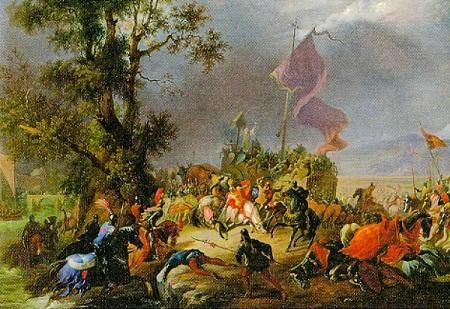
Painting "Battle of Legnano" by Massimo D'Azzello. Photo аrsbellica.it
Revival
In the second half of the 16th century, the decline of the Renaissance begins, which is also facilitated by church pressure. Revolts break out against Spanish rule, the most famous of which is under the leadership of Mazaniello in Naples in 1647. This, however, does not bring much relief: the Austrians are coming to replace the Spaniards.
Napoleon's invasion
With the invasion of Italy by Napoleon's troops (1796-1814), the desire for political unity and independence grows, the era of the reunification of Italy - the Risorgimento begins, and in 1861 Italy becomes a kingdom headed by Victor Emmanuel II. It became the first capital of the united Italy (from 1861 to 1864). leads a series of colonial wars in Somalia and Eritrea.
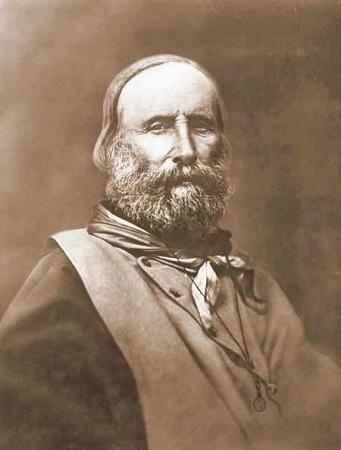
Giuseppe Garibaldi is the national hero of Italy, the leader of the Risorgimento movement. Photo milanoincontemporanea.com
World War I
With the outbreak of the First World War, Italy held a neutral position for some time, but then, on May 23, 1915, went over to the side of the Allies. With the end of the war, Trentino - Alto Adige, Venezia Giulia, Istria and some territories of Friuli are added to the composition of Italy.
Benito Mussolini
physical geography
The territory of Italy covers an area of 301.340 km² and is geographically divided into three parts: continental, bounded in the north by the Alps, and in the south - by a conventional line -; peninsular, washed by Mediterranean Sea; insular, including large islands Sardinia (24.090 km²) and Sicily (25.707 km²), the island of Elba (223 km²), as well as numerous small islands - separate or as part of archipelagos.
The total area of Italy is 301.336 km².
The length of the territorial borders is 1800 km.
In the west, Italy borders with France, in the north - with Switzerland and Austria, in the east - with Slovenia. The two micro-states of San Marino and the Vatican are surrounded on all sides by the territory of Italy. The commune Campione d'Italia, on the other hand, is located outside the country, in the Italian-speaking canton of Ticino in Switzerland, but is administratively part of the Italian region of Lombardy.
The coastline of the peninsula is 7456 km.
Relief. The way we see Italy today - its relief, coastal contour, islands and bays - is the result of a number of geodynamic processes, the interaction of two lithospheric plates, African and European, starting from the Late Cretaceous period.
The underground movements that shaped the relief of Italy millions of years ago continue today, as evidenced by the earthquakes that occur in the Apennine Peninsula and the activity of volcanoes.
Hilly terrain (41.6% of the territory) and mountainous (35.2%) prevail, while plain areas occupy 23.2% of the territory.
Much of Italy is covered by mountain ranges... Almost every region of the country is crossed by either the Alps or the Apennines. The exception is, characterized by its own, Sardo-Corsican mountainous relief.
The Alps surround the Padan plain from the north, east and west and stretch along the entire northern border of Italy (about 1000 km).
The Apennines rise south of the Padan Valley and cross from north to south the entire Apennine Peninsula - from Liguria to Calabria, capturing the northern part of Sicily.
Most high peaks Italy is located in the western part of the Alps, where many mountains exceed 4.000 m: Cervino (4.478 m), Mont Blanc (Monte bianco, 4.810 m) - the most high mountain in Europe.

Maximum high point Apennines - Mount Corno Grande (2.912 m), which is part of the Gran Sasso mountain range.
Hills cover most of Italy, mainly in the central-southern regions, on both sides of the Apennine mountain range, as well as in the pre-Alpine zones. The hills are characterized by gentle slopes and do not exceed 800 m in height.

Among the plains of Italy, the main one can be called the Padan plain, which is located in the north of the country and occupies two-thirds of all Italian plain territories. In the peninsular part of Italy and on the islands, there are small plains, located most often either along the coast or at the mouths of rivers.
Rivers, lakes and seas. Rivers in Italy are shorter compared to other European rivers (this is due to the long chain of the Apennine Mountains, which runs along the peninsula and dividing the waters in two), which is offset by their large number, especially in the northern part of the country, thanks to the presence of the Alpine mountain system rich in glaciers.
The longest river in Italy - Po (652 km), it originates on Mount Monviso in the Alps, crosses the entire Padan Valley from west to east and, forming a large delta, flows into the Adriatic Sea. The second largest - the Adige River (410 km) also flows through the Padan Valley, but from north to south, and also flows into the Adriatic Sea. The third longest river in Italy is the Tiber (405 km), which flows into the Tyrrhenian Sea; its sources are located on Mount Fumaiolo (in Emilia-Romagna).
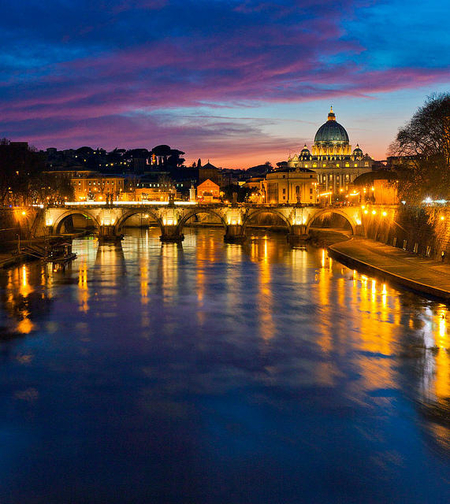
Tiber flowing through Rome. Photo RAW24X36
Weather
Italy stretches from north to south from the 35th to the 47th parallel, the climate varies in different zones countries and is divided into Mediterranean, continental and temperate.
States of San Marino and the Vatican
Italian territory is surrounded by two other micro-states - and, also located on the Apennine Peninsula.
Republic of San Marino
Population
Italy is home to 60 million 742 thousand people (as of July 31, 2011), in terms of population it is the fourth country in Europe (after Germany, France and Great Britain). The average population density is 201.57 inhabitants per square kilometer - the highest in the European Union.
The population is concentrated mainly in the coastal and lowland areas of the country, characterized by a large number of elderly people (20.3% of all inhabitants of Italy) and a low birth rate. The average life expectancy is 79.1 years for men and 84.3 years for women.
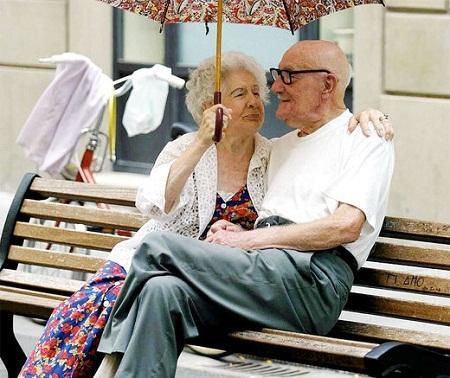
A couple of elderly Italians. Photo sanitaincifre.it
V late XIX century Italy was a country of mass emigration: Italians emigrated to the North and South America(to the USA, Argentina, Brazil), to central and northern Europe (especially to Germany). The number of Italians living outside their country, but retaining Italian citizenship, is estimated at about 4 million people.
Immigrants in Italy
Other religions
In addition, Italy is home to approximately 103,000 Buddhists, 108,000 Hindus, 25,000 adherents of Sikhism and 45,000 - Animism.
Language
In some regions of Italy, along with Italian, other languages are recognized as official: French - in Valle d'Aosta, German - in the Bolzano province, Slovenian - in the provinces of Trieste and Gorizia.
As well as many dialects, often very different from each other, a large one has formed in Italy, significantly differing from region to region and reflecting local traditions and customs.
Education

Italian coins. Photo myweb.tiscali.co.uk
In the 90s of the last century, a tight tax policy was maintained in the country, which led to low inflation rates. However, problems such as tax evasion, high public debt (119.1% of GDP), and organized crime in the south of the country continue to hamper the development of the Italian economy.
Because of economic crisis 2008-2010, in 2010 the unemployment rate in Italy reached 8.4% (in 2007 it was 6.1%). difficult: on the one hand, there is a shortage of jobs in many areas, and on the other hand, the presence of foreign workers who are ready to perform low-skilled labor on less favorable terms compared to the indigenous people of the country.
Tourism
Tourism is one of the most important and most profitable sectors of the Italian economy, employing almost 2.5 million inhabitants of the country. Thanks to its artistic, cultural, historical, archaeological, natural resources, Italy attracts tourists from all over the world: at present, the country accounts for 4.1% of all world tourism. Italy, which is annually visited by about 43.2 million visitors from abroad (data from 2009), in terms of the level of the tourism market is in fifth place in the world after France (81.9 million tourists per year), Spain (59.2 million) , USA (56 million) and China (54.7 million).
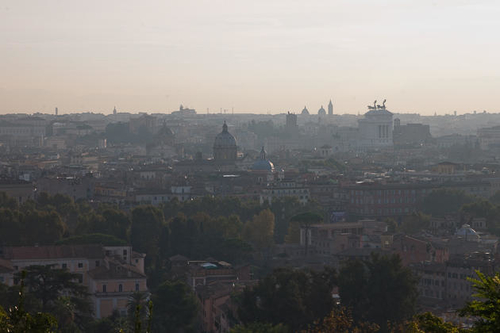
Rome is the most favorite city for tourists. Photo
Automotive industry
The Italian car industry is at a high European and world level, primarily due to the presence of the international concern FIAT, which in 2008 alone produced 2,524,325 vehicles worldwide.
FIAT (Fabbrica Italiana Automobili Torino - Italian Automobile Factory of Turin) was founded in 1899 in Turin, where the company is headquartered today. The oldest and largest automotive company in Italy FIAT owns other world-famous Italian car brands: Lancia, Alfa Romeo, Maserati, Ferrari, Abarth, which are part of the concern.
Lamborghini - famous all over the world industrial group, a sports car manufacturer founded in 1963 by Ferruccio Lamborghini, who until then was engaged in the production of agricultural tractors. Lamborghini's headquarters are located in the town of Sant'Agata Bolognese near Bologna. The company has repeatedly participated in Formula 1 competitions as a supplier of motors for various teams. Currently "Lamborghini" is part of the German concern "Volkswagen".
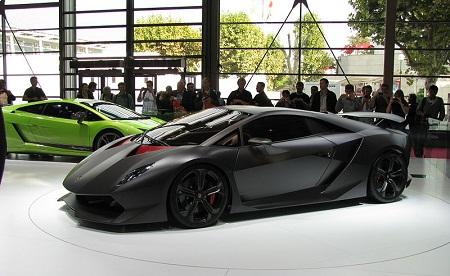
Lamborghini Sesto Elemento (2010). Photo it.wikipedia.org
Among the manufacturers of motor vehicles, one of the most famous motorcycle manufacturers in Italy is Piaggio, which produces scooters and motorcycles. The company was founded in 1884 by Rinaldo Piaggio, and at first the company was engaged in the production of ship and railway equipment. Today Piaggio also controls other Italian motorcycle companies: Gilera, Derbi, Aprilia, Moto Guzzi. One of the undoubted achievements of the company is the production of the world-famous scooter, which has already become a kind of symbol of Italy.

Vespa P125 CC ETS
Other well-known motorcycle companies in Italy and abroad: Benelli, Ducati, Garelli, Malaguti, MV Agusta, Bimota, Cagiva.
Transport
general information
The Italian transport infrastructure network includes 183.705 km (state, regional, provincial and municipal), 6.629 km of motorways, 16.643 km railways as well as 352 ports and 96 airports. In domestic transport the main role belongs to road transport: about 90% of passengers and 80% of all goods are transported by road. ranks second.
Urban and public transport
In 2009, Milan became the capital of fashion, surpassing cities such as New York, Paris, London and Rome in terms of the number of fashion and design houses. Most of the world famous fashion houses (Valentino, Gucci, Versace, Prada, Armani, Dolce & Gabbana) are located in Milan.

Valentino collection. Photo аbitoas.com
In addition, Milan has many boutiques representing fashion houses from other countries, for example, Abercrombie & Fitch (USA), Hennes & Mauritz (Sweden), Ralph Lauren (USA). Twice a year, in February-March and September-October, Fashion Week is held in the city. The most "fashionable" area of Milan is the so-called "fashion quarter", bounded by the streets of Monte Napoleone, Manzoni, della Spiga, Corso Venezia. Other areas: Gallery of Victor Emmanuel II, Duomo Square, Dante Street and Buenos Aires Avenue. In addition, a fair (Fiera di Milano) is held annually in Milan, at the largest exhibition site in Europe, presenting numerous developments of international designers.
Rome is also considered the center of fashion, albeit to a somewhat lesser extent than Milan. Haute couture houses such as Bvlgari, Fendi, Laura Biagiotti, Brioni have branches or were founded in Rome. (Chanel, Prada, Dolce & Gabbana, Armani, Versace) also have their own stores in Rome, almost all of them are located on the famous Via dei Condotti.

Condotti street in Rome. Photo easytourism2010.wordpress.com
Florence, for which especially important point is the creation of high fashion. Moreover, it can be said that Italian haute couture was born in Florence - with a show organized on February 12, 1951 by the pioneer of Italian fashion Giovanni Battista Giorgini at the Pitti Palace in the presence of numerous foreign buyers who appreciated the elegance of the Made in Italy brand and its competitiveness in relation to Parisian fashion. ... The city is proud of the level of Gucci, Enrico Coveri, Roberto Cavalli, Salvatore Ferragamo, Patrizia Pepe, Emilio Pucci and many others.
Culture
Over the past centuries, Italy has made an invaluable contribution to the development of the entire world culture. Of particular importance are two periods when the country's territory was the center of world civilization - this is and. From Greek temples to medieval castles, from Roman baths to villas of the 18th century, Italy has numerous national monuments, the cultural and artistic value of which is recognized throughout the world and enshrined in a special law. continue to be attractive for tourists from various countries.
It is on the territory of Italy that there are 47 objects and places included in the list world heritage UNESCO (the largest number among all countries), accounting for 5% of all sites under the protection of UNESCO.
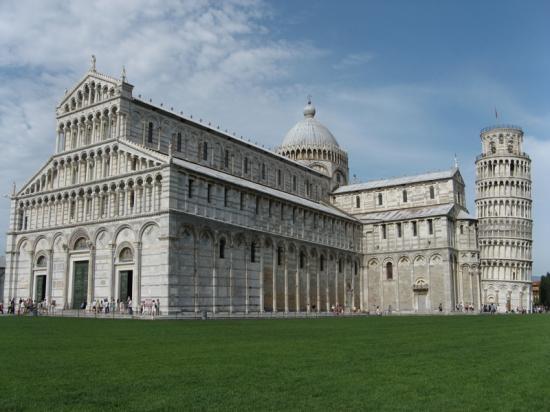
The Piazza del Miracles in Pisa is a UNESCO World Heritage Site. Photo clubfotografia.com
Music
From the 17th century, Italy became the center of the first major schools of instrumental music, which later influenced musicians throughout Europe, primarily through the works of the Baroque period. Giovanni Gabrieli, Girolamo Frescobardi, Arcangelo Corelli make a significant contribution to the development of the violin art and the concerto for several instruments, Antonio Vivaldi focuses on virtuoso performance, Domenico and Alessandro Scarlatti give new life to compositions for the harpsichord, Giovanni Battista Pergolesi becomes one of the first authors of the comic opera ...
In the 18th century, Luigi Boccherini, Luigi Cherubini and Antonio Salieri (court composer of the representatives of the Habsburg dynasty) are the most prominent representatives of instrumental and operatic Italian music, and Naples becomes an important musical and theatrical center of Europe thanks to its conservatories, where Alessandro Scarlatti, Tommaso Niccolo Yommelli and Nicola Porpora.
Later, during the period of romanticism, such lyric operas as "William Tell" and "The Barber of Seville" by Gioachino Rossini, "Puritans" by Vincenzo Bellini, "Aida", "Nabucco", "Traviata", "Rigoletto" by Giuseppe Verdi, "Turandot" ”,“ Madame Butterfly ”,“ La Bohème ”by Giacomo Puccini,“ Pagliacci ”by Ruggiero Leoncavallo,“ Rural Honor ”by Pietro Mascagni.

Giuseppe Verdi. Photo imfromim.it
The outstanding 19th century violinist Niccolo Paganini, the 20th century virtuoso pianist Arturo Benedetti Michelangeli, the pianist Maurizio Pollini, the international violinists Uto Ugi and Salvatore Accardo made a great contribution to the development of world musical culture. Among the conductors, Arturo Toscanini, Ferruccio Busoni, Riccardo Muti, Claudio Abbado stand out. Italian lyric performers of the 19th and 20th centuries are famous all over the world: tenors and Enrico Caruso, opera performers Renata Tebaldi, Katya Ricciarelli, Cecilia Bartoli, Ruggiero Raimondi, Sesto Bruscantini, Marietta Alboni, Clorinda Corradi, Rosmund Pisaroni.
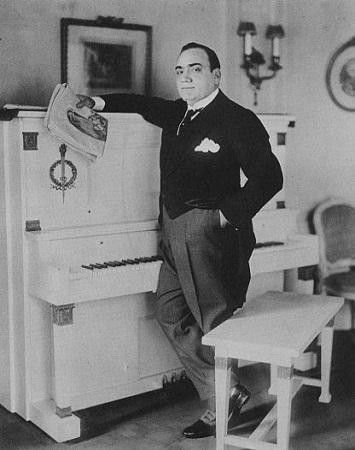
Enrico Caruso. Photo sorrentoradio.com
The Neapolitan song has special traditions, the golden age of which fell on the second half of XIX- the first half of the 20th century. Enrico Caruso, first of all, gave world fame to Neapolitan songs, including them in his repertoire (Te voglio bene assaje, ‘O sole mio,’ O surdato ’nnamorato, Torna a Surriento).
Modern tendencies of Italian song are well reflected by the festival in, annually unfolding on the stage of the theater "Ariston" of the resort town, as well as the international song contest for children "Zolotoy Tsekhin" (Zecchino d'Oro).
Architecture
Italian architecture, as such, began to take shape during the period of the Roman Empire. Experiencing the Greek and Etruscan influence, it gradually acquires its own features, arches, vaults and domes appear. Samples of architecture of that period, preserved to this day, can be seen in the remains of thermal baths (baths of Caracalla, baths of Diocletian), amphtheatres (,), theaters (theater of Marcellus), basilicas (Basilica of Maxentius), temples, among which it stands out.
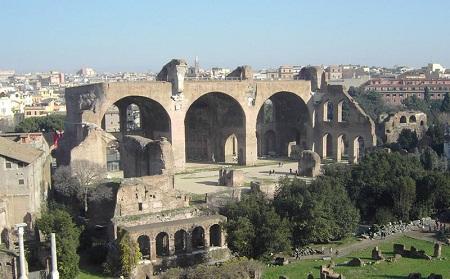
Ruins of the Basilica of Maxentius in the Roman Forum. Photo romaspqr.it
In the 7th century, monastic complexes appeared, church architecture came to the fore, basilicas with flat roofs appeared.
X-XI centuries are characterized by the flourishing of Romanesque architecture (Basilica of San Marco in Venice and Pisa Cathedral), but already in the next century in southern Italy examples of Arab-Norman architecture appear (Norman Palace in, Cathedral in Montreal). At the same time, numerous ancestral towers appeared in urban architecture; for example, the towers of San Gimignano and.

The surviving towers of San Gimignano. Photo guideinsiena.it
The Gothic style, introduced primarily by the Cistercian monks, is visible in the Basilica of St. Francis in Assisi, in the Castel del Monte near Bari, in the churches of Florence, Siena, Naples, Bologna, Venice and Milan.
During the Renaissance (XV-XVII centuries), architects developed their own style. The dome of the Cathedral of Santa Maria del Fiore in Florence and Orphanage(Spedale degli Innocenti) by Filippo Brunelleschi. The heyday was marked by such names as Bramante, Santi and Michelangelo, who are working on the erection.
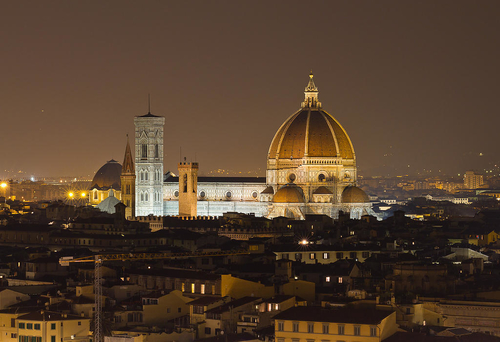
Cathedral of Santa Maria del Fiore in Florence. Photo: .

Leonardo da Vinci, self-portrait. Photo it.wikipedia.org
Contribution of Italians to the development of sciences:
Maths. Leonardo Fibonacci (Leonardo of Pisa) introduced Arabic numerals in Europe in the 12th century. Niccolo Tartaglia found a formula for solving a cubic equation in the 16th century. Girolamo Cardano and Paolo Ruffini made great contributions to the development of algebra. In addition, Girolamo Cardano is considered the inventor of the propeller shaft. In the 19th-20th centuries, the Italian schools of algebraic geometry and differential geometry developed.
Physics. In addition to Galileo Galilei, the founder of experimental physics, is worth highlighting Alessandro Volta - for his discoveries in the field of electricity, after whom the unit of electrical voltage, Volt, is named. In the 20th century, such scientists, Nobel Prize winners, as Guglielmo Marconi, one of the inventors of radio, Enrico Fermi, who made a significant contribution to the development of nuclear physics, Emilio Segre, who discovered the antiproton, Riccardo Giaconi, the inventor of the X-ray telescope, appeared.
Chemistry. Among Italian chemical scientists, Stanislao Cannizzaro, who worked in the field of organic chemistry, Ascanio Sobrero, the inventor of nitroglycerin, Giacomo Fauser and Luigi Casale, who discovered the method of synthesizing ammonia, and Giulio Natta, who received the Nobel Prize for the study of organic polymers, are famous for their discoveries.
Medicine. As early as the 9th century, a higher medical school (Scuola medica salerniana), the first and main medical institution of the Middle Ages, appeared in Salerno. Later, important medical discoveries were made by Gabriele Falloppio, who described the fallopian tubes named after him, Giovanni Maria Lanchisi, who first suggested the transmission of malaria by mosquitoes, Lazzaro Spallanzani, who refuted the theory of spontaneous generation. Many Italians have received the Nobel Prize for their discoveries in the field of medicine.
Geography. The interest of Italians in, which allowed Marco Polo to reach India in the 13th century, reaches its maximum in XV-XVI centuries... During this period, Christopher Columbus discovers America, Giovanni Caboto explores the coast of Canada, Amerigo Vespucci explores New World making geographical discoveries on the South American mainland. In the 20th century, Umberto Nobile, aboard the Norway airship, made the first flight to the North Pole.

Airship Umberto Nobile, 1926. Photo: i12bent.tumblr.com
History and Philosophy. Among Italian historians, Landolfo Sagache became famous for his works, who wrote a 26-volume work on history (Historia Miscella) in the 10th century, Lorenzo Valla (15th century), the founder of historiographic criticism, Francesco Guicciardini, known for his book “History of Italy”, Ludovico Antonio Muratori ( XVIII century), who is considered the father of Italian historiography, Gaetano de Sanctis, historian of antiquity, president of the Institute of the Italian Encyclopedia in 1947-1954, Renzo de Felice, researcher of fascism.
Contributions to the development of philosophy were made by: theologian Severino Boezio, whose works influenced the Christian philosophy of the Middle Ages, Thomas Aquinas - a church teacher, scholastic, Bonaventura - theologian and alchemist, Marsilio Ficino and Pico della Mirandola - representatives of Neoplatonism, Bernardino Telesio, who influenced the development Epirism, Giordano Bruno - a Domnican monk, who anticipated many astronomical discoveries with his hypotheses, Tommaso Campanella, who expressed the ideas of utopian socialism. V XVIII-XIX centuries Giambattista Vico appears - the author of the idea of the cyclical development of society, Cesare Beccaria - an outstanding figure of the Enlightenment. Among modern philosophers, Benedetto Croce, the ideologue of liberalism, and, like Giovanni Gentile, the representative of neo-idealism, and Antonio Gramsci, the theorist of Marxism, one of the founders of the Italian Communist Party, are known.
Sport
The most popular sport in Italy is, of course, followed by volleyball and basketball, rugby, cycling, athletics, fencing, aquatic species sports (swimming, water polo, diving) and, finally, auto and motor sports.
Basketball for Italians continues to be the second most popular team game among fans after football. In this sport, the men's team won the European Championship twice (1983 and 1999), and back in 1938 the Italian women's basketball team managed to achieve the same success.
The Italian men's volleyball team can be proud of victories in the European Championships, in which they have won 6 gold medals, two silvers and two bronze. Three times the European championships in volleyball were held in Italy: in 1948 and 2005 in Rome and in 1971 in Milan. In the men's volleyball world championships, Italy won three gold medals in a row - in 1990, 1994, 1998 and one silver - in the 1978 championship, losing first place to the USSR national team. The Italian men's team is recognized by the International Volleyball Federation as the best team of the 20th century, and Lorenzo Bernardi is named the volleyball player of the century.
In women's volleyball, the Italians won the world championship in 2002, in the European championship, the Italian team won gold twice: in 2007 and in 2009.
Fans of motorsport are well aware of the racetracks of the cities of Monza and Imola and the Mugello race track. Next to the outstanding motorcycle racers of the past - Masetti, Ubbiani, Provini and Giacomo Agostini (the record holder for the number of victories, who won 122 Grand Prix) are modern champions: Max Biaggi, Loris Capirossi and Valentino Rossi - nine-time world champion in different classes. Motorcycles of such manufacturers as Bianchi, Aprilla, Beta Motor, Cagiva, Gilera, Guzzi, MV Agusta, TM Racing, Benelli, Ducati brought victories to their teams at the most prestigious world competitions.

Valentino Rossi on the race track. Photo ducatiblog.info
Motor sport, also very beloved by Italians, has brought many victories to both sports car manufacturers and the pilots themselves, in different types competitions - from high-speed "Formula 1" to long races "time" and endurance. Since the beginning of the 20th century, manufacturers Fiat, Alfa Romeo, Maserati (the only Italian company to win the Indianapolis 500 Miles twice in a row), Ferrari, Abarth, Lancia won the Targa Florio, Thousand Miles, 24 Hours of Le Mans races. , "Nurburgring" and others. In Formula 1, the Scuderia Ferrari team continues to hold the record for the number of best pilots and constructors, victories in singles competitions, while remaining the record holder for the longest continuous participation in Formula 1 - since the founding of these international races.
As for the Olympic Games, in 1960 Rome hosted the XVII Olympiad, in 1956 the VII Winter Olympic Games were held in Cortina d'Ampezzo.
Italian mafia
And its organization ("Camorra", "Cosa Nostra", "Ndrangheta", "Sacra crown unit") is a phenomenon that emerged in southern Italy in the 19th century and then expanded to an international level. so large that in one way or another it affects 22% of the country's inhabitants and 14.6% of the GNP, is closely related to the economy and political structures, primarily at the local level. A long and unceasing struggle against the specially created department of the Ministry of Internal Affairs, the Investigative Anti-Mafia Directorate, is being conducted with varying success: from time to time, representatives of the forces of order, despite their own losses, manage to arrest mafia leaders.
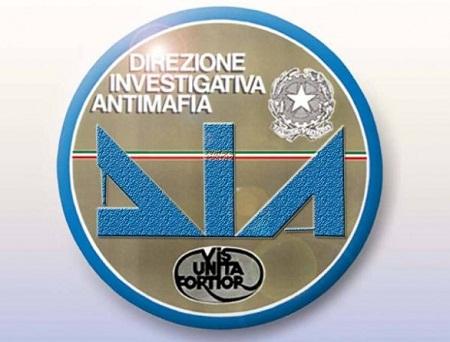
The logo of the Investigative Anti-Mafia Department. Photo it.wikipedia.org
Italy was ranked 63rd (out of 180 countries) in terms of corruption in 2010, according to Euirspes. Calabria, Sicily and Puglia are particularly prone to corruption.
Kitchen
One of the most famous and popular in the world, based on a wide variety of products that vary from region to region, which is explained both by the culinary heritage of the peoples who lived on these lands, and by the territorial and climatic conditions - from the harsh mountain conditions of the Alps to the mild climate of coastal zones ... It is enough to compare, for example,. Throughout the country, from north to south, a variety of grape varieties are grown, the properties and qualities of which vary depending on each individual region. , and there are about 2000 types in total, make up a significant part of the country's export and about a quarter of the total world wine production. Every spring in Piedmont, in a city that can be called the capital of Italian wine, a celebration dedicated to this drink unfolds for several weeks. Another region of Italy that produces the largest (after Piedmont) volumes of wines is the famous Chianti and also .. All three organizations are connected and productively cooperate for many years.




